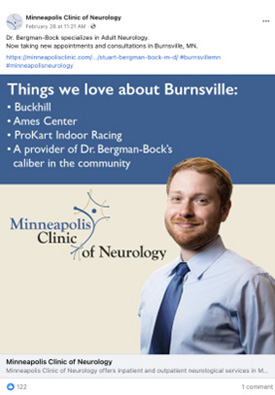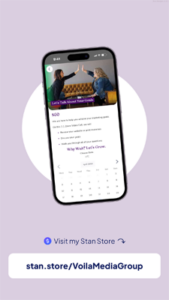Your website is your digital storefront, and it plays a crucial role in attracting, engaging, and retaining visitors.
Similar to the regular maintenance needed for your car, your website also demands attention and investment to ensure it operates at its best.
The Breakdown of Costs
Let’s break down the various costs associated with maintaining a website–from domain names, hosting, and SSL certificates to regular updates and more.
Your Domain Name
This is your online identity. A domain name serves as your unique online address, making it easy for people to find and remember your website. It’s like the digital equivalent of a physical address.
The cost of a domain name can vary widely based on several factors, including the domain extension (TLD – Top-Level Domain), the registrar you choose, the popularity of the domain name, and any additional services you may want to bundle with the domain, such as privacy protection or website hosting. Here’s a general overview:
Standard TLDs: Common domain extensions like .com, .net, and .org typically cost anywhere from $10 to $50 per year, depending on the registrar and any ongoing promotions they may have.
Country Code TLDs (ccTLDs): These are specific to individual countries, such as .uk (United Kingdom), .ca (Canada), or .de (Germany). The cost can vary, but it’s usually in a similar price range as standard TLDs.
Premium Domains: Some domain names are considered premium because they are short, memorable, or consist of common keywords. Premium domains can cost hundreds or even thousands of dollars, or sometimes even more, depending on their perceived value.
New TLDs: With the introduction of new domain extensions like .app, .blog, .guru, and many more, the pricing can vary. Some of these new TLDs may have higher initial registration fees.
Renewal Fees: Keep in mind that domain registration is usually an annual cost. You’ll need to renew your domain each year to keep it active, and the renewal cost is often similar to the initial registration cost.
There are several reputable domain registrars where you can search for and register a domain name, even if you don’t have a website yet. Here are some popular options:
• GoDaddy: One of the largest and most well-known domain registrars. They offer a wide range of domain extensions and often have promotional deals for the first year of registration.
• Namecheap: Known for its competitive pricing, Namecheap provides straightforward domain registration services along with optional add-ons like privacy protection.
• Google Domains: Google’s domain registration service is user-friendly and offers transparent pricing. It also includes features like free privacy protection.
• Bluehost: While primarily known for hosting, Bluehost also offers domain registration services. This can be convenient if you plan to use Bluehost as your hosting provider in the future.
Website Hosting
Website hosting refers to the service of storing and making web content accessible on the internet. When you create a website, the files that make up your site (such as HTML, forms, images, videos, etc.) need to be stored on a server connected to the internet. This server is maintained by a web hosting provider, and it’s where your website’s data is stored, making it accessible to users who visit your site.
Web hosting is often likened to renting space in a digital “mall” or “storage unit.”
Here’s an example:
Web hosting is like renting a storefront in a bustling shopping mall. Your website is the store, and the hosting provider is the mall management. They provide the physical space (server) where you display your products (website content) for customers (website visitors) to browse and interact with. Just as you pay rent to the mall management for your store, you pay a hosting fee to the hosting provider for the space and resources your website occupies on their server.
Types of Hosting
There are different types of hosting, including shared hosting, VPS (Virtual Private Server) hosting, dedicated hosting, and cloud hosting. Each type has its own level of resources, control, and scalability.
Website hosting is crucial because it ensures that your website is accessible to anyone with an internet connection. Choosing the right hosting provider and plan is important based on your website’s needs, such as traffic volume, the complexity of the site, security requirements, and budget.
There are several popular and reputable website hosting companies that offer a range of hosting services to cater to different needs. Here are some widely recognized options:
• WP Engine: Specializes in managed WordPress hosting, providing high-speed and secure hosting for WordPress sites. This is the hosting provider we use for all of our clients that runs from $35 – $99 per month.
• Bluehost: Known for its reliability and WordPress integration, Bluehost is a popular choice for beginners and small to medium-sized websites.
• GoDaddy: A well-known brand with a wide range of hosting services, including shared, VPS, and dedicated hosting.
SSL Certificates
An SSL (Secure Sockets Layer) certificate is a digital certificate that establishes a secure encrypted connection between a web server and a user’s web browser. This encryption ensures that data transmitted between the server and the browser remains confidential and secure, making it an essential component for websites, particularly those that handle sensitive information like login credentials, payment details, and personal data.
The primary purpose of an SSL certificate is to ensure data encryption, authentication, and trust.
Many website hosting companies also offer a free SSL certificate, but they can run about $100 annually if not.
Regular Updates and Maintenance
For basic website updates and maintenance, some platforms and content management systems (CMS) offer built-in tools that allow you to manage updates yourself without additional costs.
However, if you prefer professional assistance or have a more complex website and monthly needs like adding a blog or podcast to your site, then budgeting around $250 to $660 per month is a reasonable estimate.
Regular updates and maintenance are not optional but rather a critical aspect of running a successful website. Here’s why:
Security
Cyber threats are constantly evolving, and websites are a prime target for hackers. Regular updates ensure that your website’s software, plugins, and security measures are up-to-date, minimizing vulnerabilities and reducing the risk of data breaches.
Performance
A slow-loading website can drive visitors away and negatively impact your search engine rankings. Regular maintenance helps optimize your website’s performance, ensuring it loads quickly and provides a seamless user experience.
User Experience
Visitors expect a smooth and user-friendly experience. Regular updates allow you to fix broken links, improve navigation, and enhance overall usability, keeping your audience engaged and satisfied.
SEO
Search engines favor websites with fresh and relevant content. Regularly updating your website with new articles, blog posts, or product updates can improve your search engine rankings and drive more organic traffic to your site.
Compatibility
As technologies advance, older website elements may become incompatible with new browsers and devices. Regular maintenance ensures your website remains compatible across various platforms, ensuring broader reach and accessibility.
Data Backup
Accidents happen, and data loss can be devastating. Regularly backing up your website provides that confidence that you can quickly recover your data in case of any unforeseen issues or disasters.
Content Creation
Yes, content creation should be considered a cost within the scope of website maintenance, especially if you’re regularly updating or adding new content to your website. Content creation involves various activities such as:
• Writing: Creating new blog posts, articles, product descriptions, or other textual content for your website.
• Graphic Design: Developing images, infographics, banners, and other visual assets for your site.
• Video Production: If you’re adding videos to your website, producing and editing video content incurs costs.
• SEO (Search Engine Optimization): Optimizing existing content or creating new content with SEO in mind.
• Regular Updates: Keeping existing content fresh and relevant by updating it regularly.
• Social Media: Creating content for social media platforms that link back to your website.
These activities require time, effort, and often specialized skills. If you’re handling content creation in-house, you’ll need to account for the cost of employee time, tools, and any necessary training. If you’re outsourcing content creation to freelancers or agencies, you’ll need to budget for their fees. Our website maintenance costs include many of these aspects rolled into the monthly maintenance fee.
The frequency and complexity of content creation will vary depending on your website’s goals, industry, and audience. It’s essential to consider these factors when estimating the overall cost of website maintenance and content creation.
Don’t Let These Numbers Stress You Out!
Setting up and maintaining a website can be a stressful process – especially with all these price tags and costs to consider. However, with careful planning, smart budgeting, and the right strategies, you can navigate the financial aspects of website management more effectively.
If you find yourself overwhelmed or unsure about handling all these aspects on your own, we are here to help. Our team of experts specializes in website design, content creation, digital marketing, and website maintenance.
Most businesses are frustrated spending too much while getting too little from their marketing. We build their websites & run their campaigns.
So they’ll:
1) Know what they’ll get.
2) Earn more than they spend.
3) While winning leads & growing sales.
voilamediagrp
on
April 1, 2024














